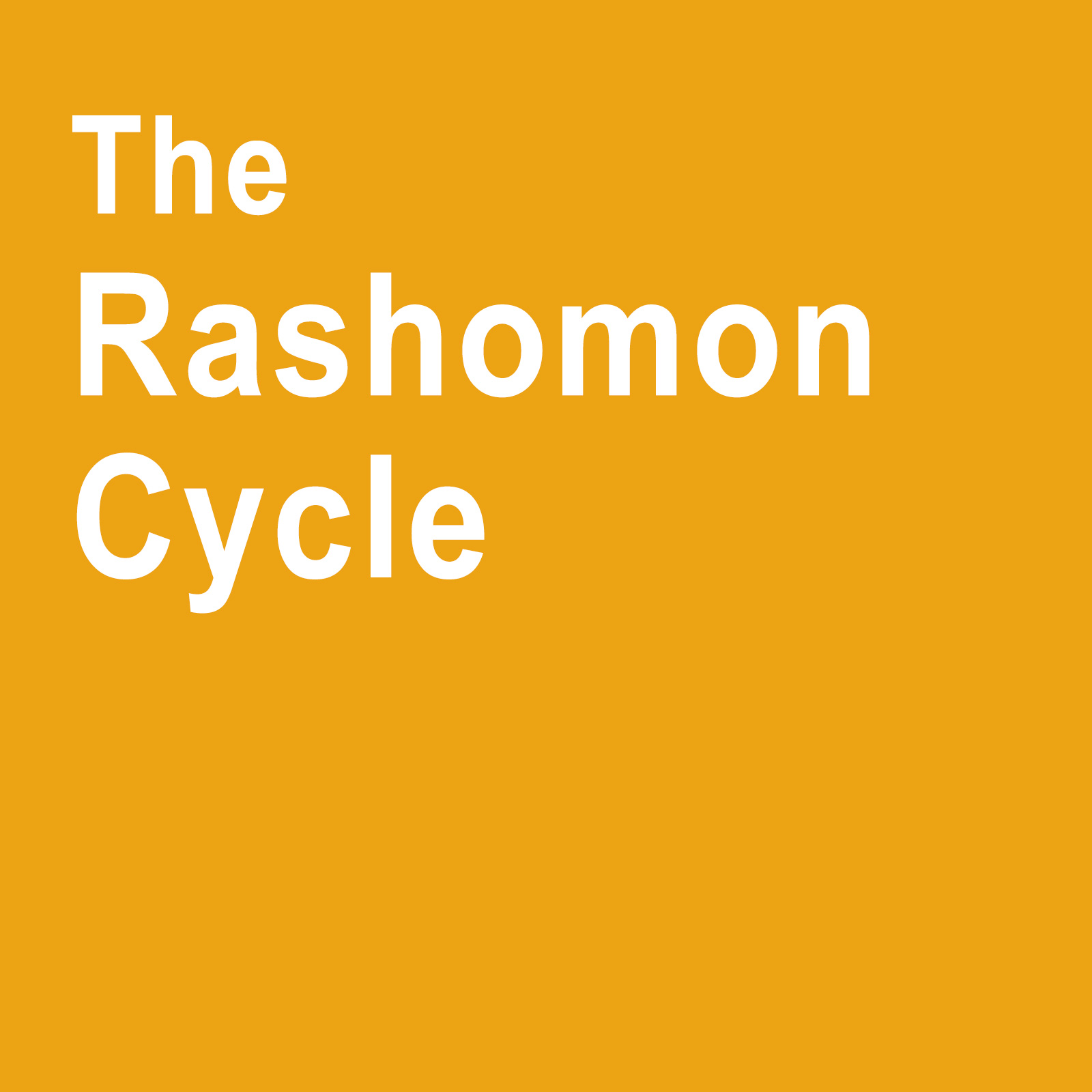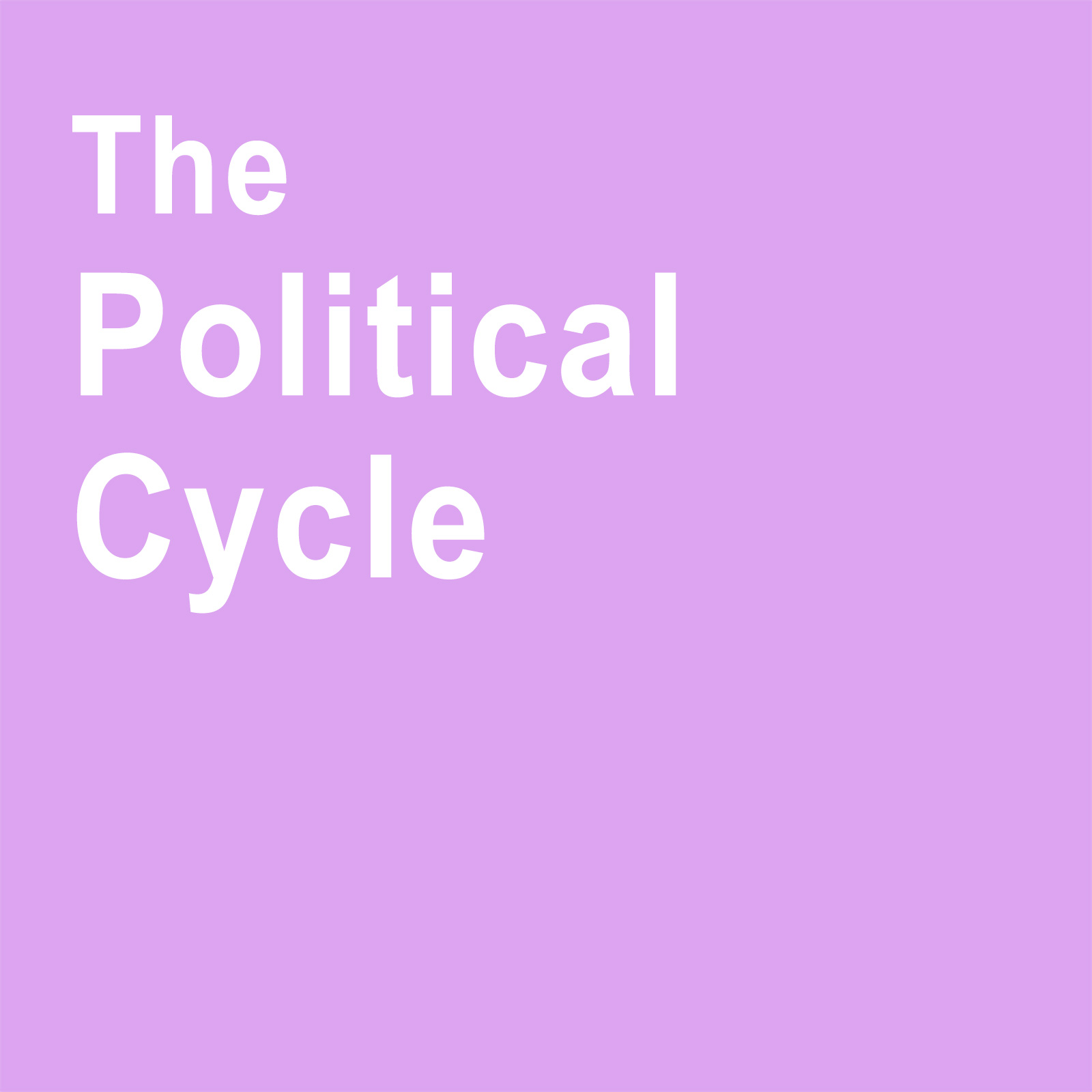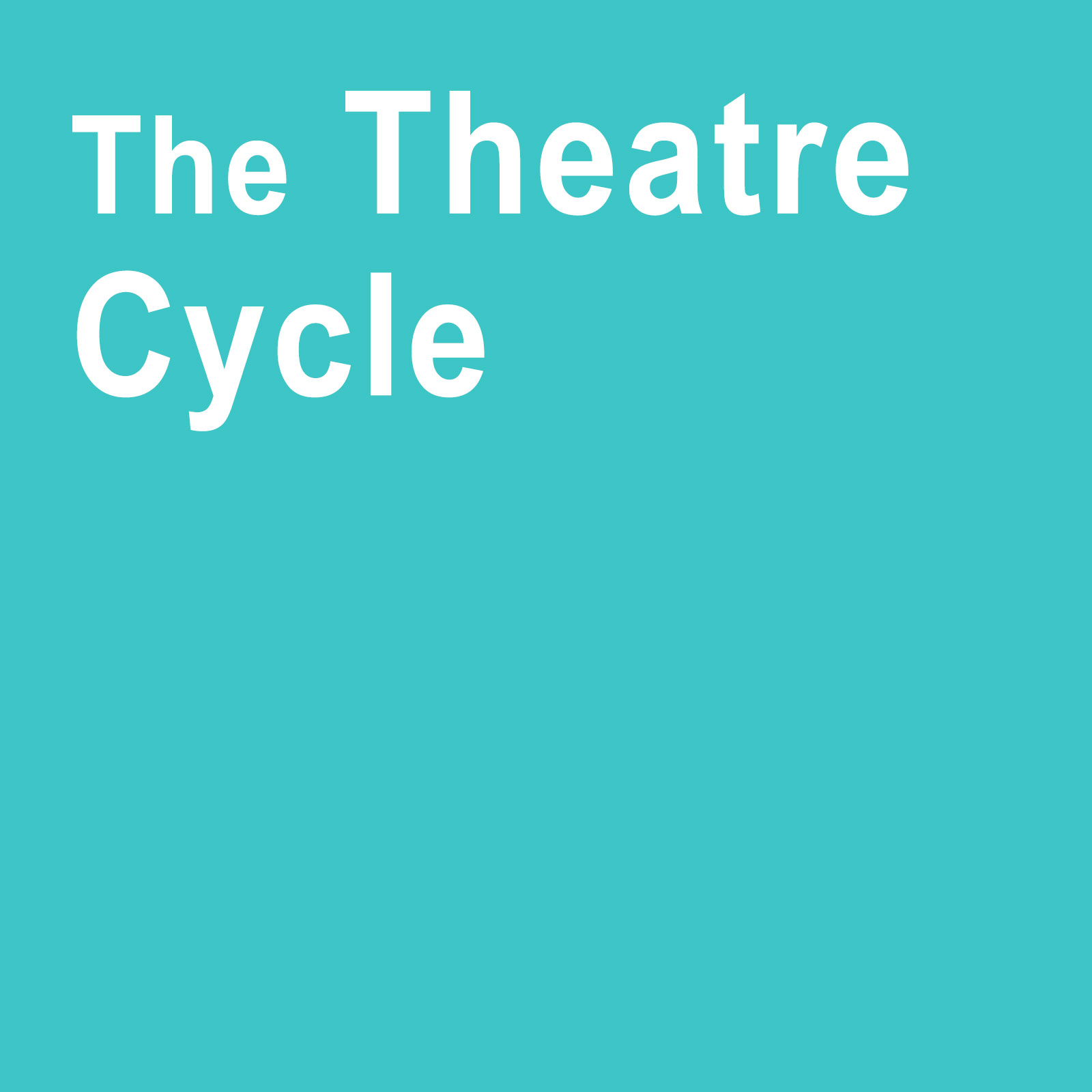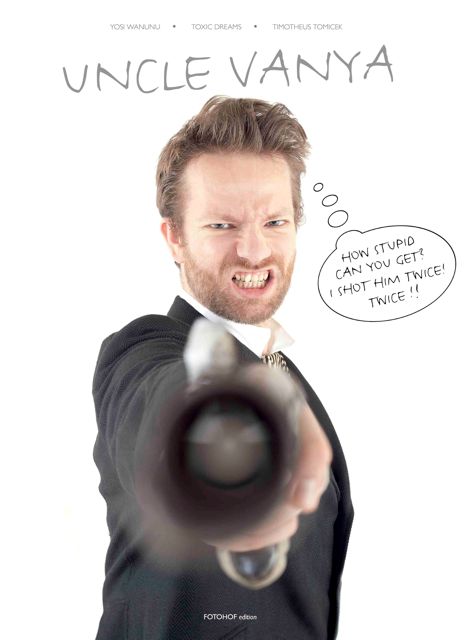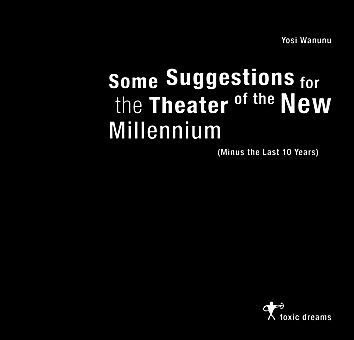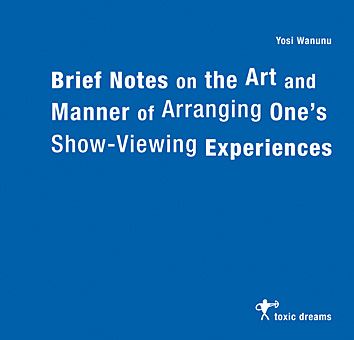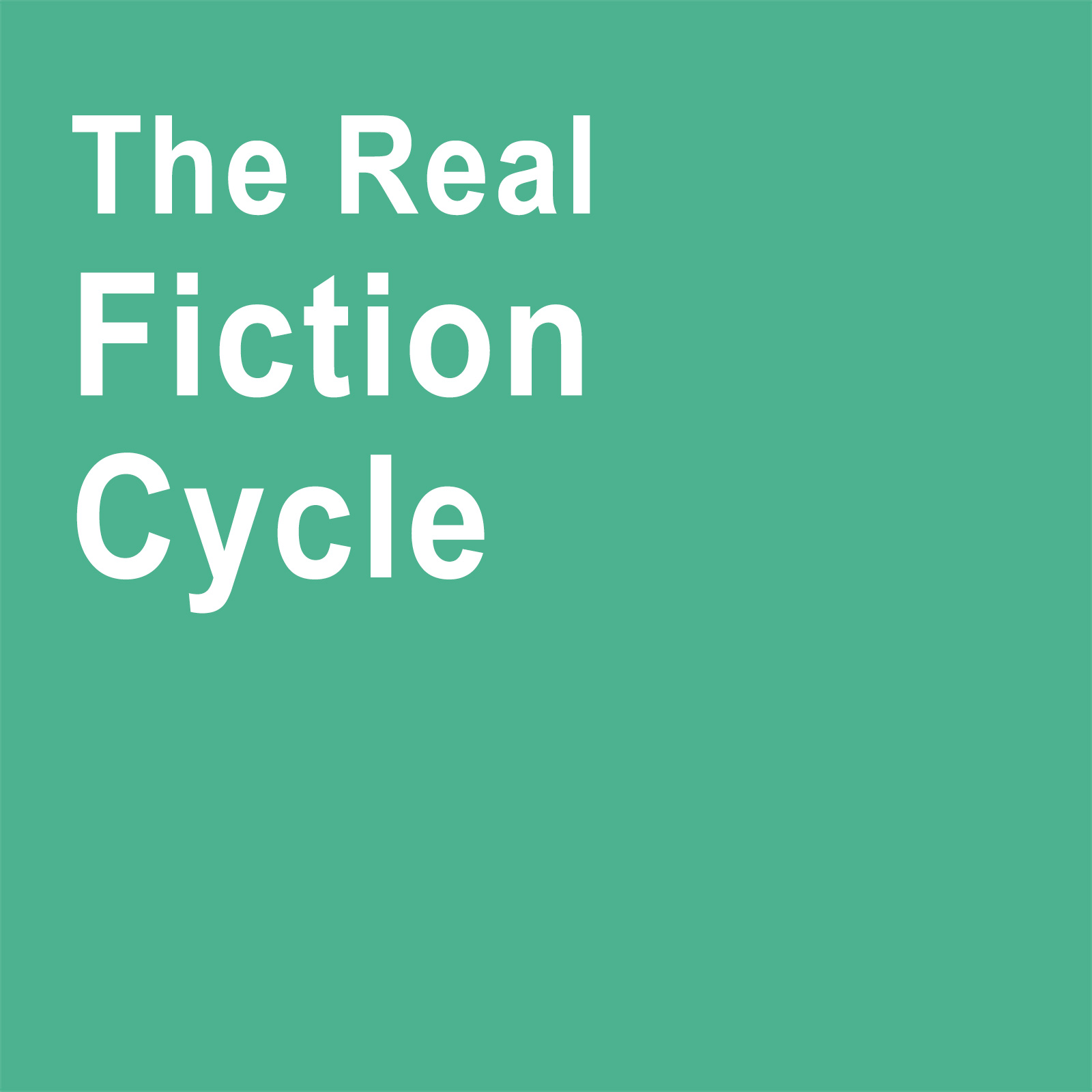
Some Notes on Real Fiction
One of the first things rejected by the theatrical avant-garde as part of the oppressive nature of literary or bourgeois realism was dialogue. The side effect was, of course, the demise of the classical story structure. This attitude was true in the 60s, and it is true of much of performance art today. The general attitude, not just toward dialogue, but language in general, is exemplified in the early extremism of Roland Barthes’ inaugural lecture at the College de France: “But Language-the performance of a language system-is neither reactionary nor progressive; it is quite simply fascist; for fascism does not prevent speech, it compels speech.”
The distrust of the apparent authoritarian nature of language extended from Artaud to John Cage. If used, language became fragmented, tortured, and generally objectified in a way that rejected any referential sense (except perhaps as an infinite regress of self-reference).
The rejection of articulated language meant, sooner than later, the rejection of storytelling. The story on ‘stage’ became sporadic, aphasic, autistic, spastic.
Literary or bourgeois realism on stage was a puzzle; one that is slowly being solved. The pieces come together in the end. The picture is complete.
Theatrical avant-garde started by taking the pieces out of, to begin with, an incomplete puzzle, without any concern for the original picture. The pieces were never suppose to come together.
But performance art could not sustain this stance for long. What gradually developed in performance art, what made it “genre” instead of an ongoing conceptual investigation, to cite Josette Feral, is its culmination as monologue. It seems that now there is almost no performance art that is not essentially monologue. It is stand-up comedy and, usually autobiographical, postmodernized storytelling.
The truth is that “story telling” never left the stage. But terms like: plot development, storylines, emotional arcs, well-made text with beginning-middle-end, were replaced by associative editing, cutting up of various texts, quoting, redistributing, and recontextualizating of accumulated texts. This is texture rather than text; theatre “pieces,” rather than play/story. A dramaturgy of the dispersed text.
Today, fragmented speech is a novelty of avant-garde, used mainly in modern music/opera performances. It seems that the rejection of language/story ran its course and the purpose it served is no longer a necessity of avant-garde strategies.
Like abstract painting or conceptual art, fragmented storytelling became just one more strategy in the arsenal of performance art.
So, are we back to stories? Can we used the performance art strategies in the service of a more coherent “play”?
Naomi Klein, one of the most political and prolific writer in recent years, employs the strategy of story telling as part of her more academic/journalistic research. In order to backup her political standing she tells stories about local communities, personal incidents, anecdotes of people who actually experience the ecological or economical crisis she is writing about. The reality she is presenting is complex, fragmented, hard to grasp. But the stories are clear; they have a cause and effect, they demonstrate the arc of suffering of real people.
The question that we putting forward is simple: is it not the time to use again stories in order to achieve a political narrative that we seemed to have lost?
In his book, Why Conservatives Tell Stories and Liberals Don’t, Davis Ricci describes a gap when it comes to story telling. Unlike conservatives, Ricci writes, liberals don’t tell stories, in the sense of together offering the public a broad vision or overarching narrative. Some liberals may tell small tales (say, anecdotes) but those don’t add up to a large and shared narrative. liberals, according to Ricci, promote wide-ranging discussions of an endless variety of social, political, economic, and environmental problems but do not propose solutions that can be linked to a shared story line.
Isn’t it what happened to performance art? We promote wide-ranging discussions of an endless variety of social, political, economic, and environmental problems in our shows but we lost the narrative and the audience. We keep preaching to the converted.
The main attempt in our new cycle “Real Fiction” is to examine these questions. Can we bring stories back into fragmented performance art structures? Can we tell ‘straight stories’? Can we not see the narrative theatre and the theatrical avant-garde as merely opposed, but always already operating dialectically within the big picture of political change?
The final irony is that anyone committed to political change has to believe in truth (as Vaclav Havel put it, to “live in truth”), no matter how much he or she accepts the relativity of language and the concept of truth as merely an effect of power. To what extent is theatre itself ontologically caught in this very paradox? How is truth arrived at by illusion/constructed stories? How do we, as Polonius proposed, “by indirections find directions out”? What is the story we need to tell?
*The antirealist avant-garde is not going to reach a broad audience if it fixates on deconstructing theatrical forms as the primary political act. Democratic political change cannot take place without the support of a broad audience. Therefore, the antirealist avant-garde, in order to make any real political impact, and not remain in a perpetual self-reifying marginal status, must have some impact upon a mediating form that will translate some of the political impact of the avant-garde’s questionings to a larger constituency. And that form tends to be what it invidiously labels “realist story telling.”
There’s been a lot of talk in recent years about reality in fiction, or reality versus fiction. Take the many articles about the ‘true’ writings of Karl Ove Knausgaard, or the huge amount of attention paid to David Shields’s polemic Reality Hunger. Time and again we hear about a new desire for the real, about a realism which is realistic set against an avant-garde which isn’t, and so on. It seems to me meaningless, or at least unproductive, to discuss such things unless, to borrow a formulation from the ‘realist’ writer Raymond Carver, we first ask what we talk about when we talk about the real.
William Burroughs makes the point when discussing his cut-up technique: ‘Take a walk down a city street … You have seen a person cut in two by a car, bits and pieces of street signs and advertisements, reflections from shop windows – a montage
of fragments … Consciousness is a cut-up; life is a cut-up.’
It turns out that the 20th-century avant-garde often paints a far more realistic picture of experience than 19th-century realists ever did. The point of course that even if Burroughs is right this is not the way we think about reality and the real. As Barthes put it in 1970, ‘realism consists not in copying the real but in copying a (depicted) copy of the real’; it ‘copies what is already a copy’.
The Classic Hollywood film, or for that matter television, script gives us a clue for the kind of structure a story have to include in order to work for a large audience. What the protagonist needs in order to learn and ‘grow’, in other words, to undergo a transformation, is simple. He or She must usually (pick one): (a) become more caring and altruistic; (b) stop and smell the roses; (c) make a romantic commitment; (d) learn to trust other; (E) generally see the error of her or his way; (f) gain self-confidence and poise; (g) all of the above.
The transformation is primarily psychological, although many Hollywood transformations are physical, or at least conveyed physically: ugly duckling into swan, child into adult, bookish boy into muscular conqueror, etc.
Can we take this script structure and invert it to our purpose?
In an age where news and campaigning are dominated by television and social media, large and far-reaching “stories,” i.e., tales, parables, myths, themes, chronicles, extended metaphors, and so forth, adding up to “narratives,” can often, but not always, generate electoral success. Therefore, failure to tell them constitutes a political liability for some candidates to public office.
The problem is that candidates who offer no stories must recreate their public image every time they seek election. This is because voters do not see them as firm supporters of a particular world view which, via consistent stories from one election to the next, conveniently labels the candidates who espouse those stories.
Conservatives politicians promote repeatedly and consistently a set of concepts that, together, add up to a story line praising traditions and free markets. See for example this quote, part of Bush II’s first inaugural address:
“We have a place, all of us, in a long story – a story we continue, but whose end we will not see. It is the story of a new world that became a friend and liberator of the old, a story of a slave-holding society that became a servant of freedom, the story of a power that went into the world to protect but not to possess, to defend but not to conquer. It is the American story – a story of flawed and fallible people, united across the generations by grand and enduring ideals. The grandest of these ideals is an unfolding promise that everyone belongs, that everyone deserves a chance, that no insignificant person was ever born. Americans are called to enact this promise in our lives and in our laws. And though our nation has sometimes halted, and sometimes delayed, we must follow no other course. Through much of the last century, America’s faith in freedom and democracy was a rock in a raging sea. Now it is a seed upon the wind, taking root in many nations. Our democratic faith is more than the creed of our country, it is the inborn hope of our humanity, an ideal we carry but do not won, a trust we bear and pass along…. While many of our citizens prosper, others doubt the promise, even the justice, of our own country. The ambitions of some Americans are limited by failing schools and hidden prejudice and the circumstances of their birth…. We do not accept this, and we will not allow it. Our unity, our union, is the serious work of leaders and citizens in every generation. And this is my solemn pledge: I will work to build a single nation of justice and opportunity. I know this is in our reach because we are guided by a power larger than ourselves”
Maybe it is time for us to rediscover our story, the story of the left.

